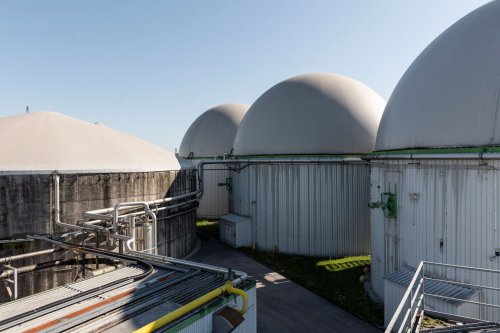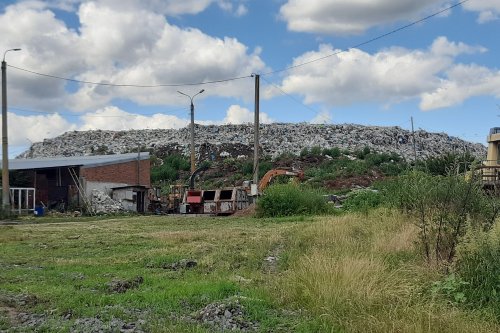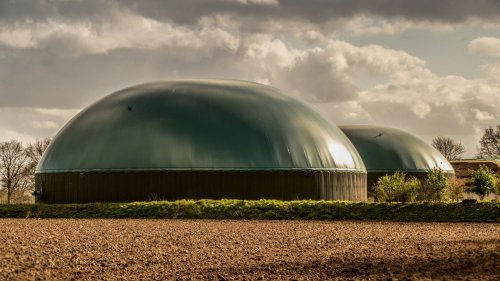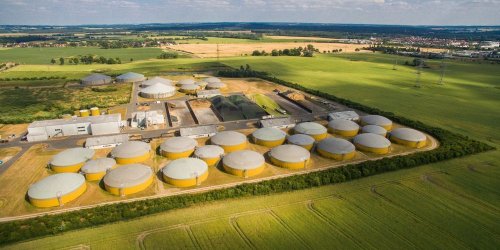Ukraine, even during the war, has a significant interest in the development of the biomethane market, because it contributes to energy independence, because it reduces the need for natural gas.
Also, biomethane can be sold abroad, said the head of the decarbonization direction of the Regional Gas Company (RGC) Igor Gotsyk, reports Energyreform.
RGC expects that the first industrial injection of biomethane into gas distribution networks will begin in less than half a year, under the first contract with the biomethane producer Hals Agro in the Chernihiv region. Its capacity is about 3 million cubic meters. m of biomethane per year, which will provide about 1500 families during the year.
Gotsyk noted that with the start of a full-scale invasion, biomethane projects were put on pause in the RGC. However, after some time, the owners of both new facilities and those with whom cooperation had already continued began to contact the company.
“Although in general the situation in the market is different for everyone, because there are questions about financing and investment, development plans and the security situation. Any biogas plant can become a biomethane producer. In fact, biomethane is the degree of purification of biogas,” he said.
The biomethane production technology itself is both simple and complex at the same time: they collected the resource, loaded it into digesters (special tanks) and added bacteria at a certain temperature. But the temperature deviation of more than 0.5℃ destroys the process, the bacteria die.
"So far, the regulatory framework is being finalized and the mechanism for guaranteeing the origin of biomethane and the register of producers should be launched in the near future," the material says.
It is economically more profitable to build larger plants, because this will accelerate the payback faster, and the cost of building 1 MW of power will decrease. According to the estimates of the Bioenergy Association of Ukraine, the construction of a plant for 10 million cubic meters. m of biomethane per year costs €12-15 million.
Biomethane can be sold in Europe according to the principle virtual delivery. That is, the sale of a certificate of passage to the EU will mean that a local buyer will be able to use the same amount of natural gas for which he has a green certificate.
Currently, there are up to 100 biogas producers in Ukraine that use this resource to generate electricity and heat. Biomethane production for them is the logical end of the biogas production cycle.
If electricity is generated from biogas, then 30-40% of the energy is lost due to the efficiency of the cogeneration plant. And for biomethane, the loss of volumes in the purification of biogas does not exceed 10%.
Electricity, which biogas plants produce now, is sold at a green tariff. But in a war, Guaranted Buyer pays only a fraction of its cost, and the model itself is limited to 2029.
This encourages plant owners to add biomethane to their portfolio or build a biomethane-only facility. If a manufacturer is located in the region of presence of timing operators operating under the RGC brand, where there is gasification at least in the nearest area, such an enterprise can produce biomethane and pump it into the network.
A manufacturer or a potential investor can apply to a single email address (biomethane@rgc.ua) and get advice on how to connect an existing plant or the construction of which is planned.
We work with investors who, conditionally, consider 3-5 settlements as potential consumers of biomethane. We give them a picture of where consumption will be, so they can plan the capacity of the plant,” Gotsyk said.
All projects in RGC are worked out individually, because each of them is unique in terms of networks, consumption and technical solution for connection. After the conclusion of the contract for design and construction, specialists accompany the client up to the launch of gas.
This service is provided on a one-stop-shop basis.
In the location of production, the balance is optimal - if there is both a large consumption and raw materials nearby. After all 20 km for the logistics of raw materials is not a significant distance, but for the construction of networks it is essential.
“We have a direct relationship with the best equipment manufacturers that have been operating in the biomethane market for over 15 years. Among them are Pietro Fiorentini, Emerson, Mesura. In total, there are 156 direct contracts in our portfolio," the expert noted.
This allows you to use the developments that European countries have been going for 10-15 years. The development of the biomethane market according to modern standards will be a serious competitive advantage for Ukraine.
Building networks does not take much time. Most of all, it hinders the supply of equipment and technologies for the plants themselves. Under peaceful conditions, deliveries lasted from 6 to 9 months, now it may be longer. But for projects where contracts have been signed, equipment is already on its way to Ukraine.
Timing does not have a separate download rate. Biomethane producers only have to finance the construction of external and internal gas networks. GRM operators provide access to capacity, technical conditions and will continue to accept biomethane. RGC, as a production and technology company, will maintain facilities and provide after-sales services.
“The issue of the tariff for injection is debatable. As a general practice, GRM operators do not receive additional funds from biomethane producers, because consumers pay for capacity as part of the distribution tariff. But there may be certain incentive conditions for GRM operators to service new connections,” noted Gotzik.
Requirements for equipment and quality of biomethane
The biogas producer needs to install equipment for biogas purification to the quality of biomethane (this is the so-called biogas upgrade) and put it into operation. In essence, this is a system of filters that purify biogas from CO2 and other elements or reduce their concentration so that the quality of biomethane meets the requirements of the law.
At the outlet of the cleaning system, the following is installed:
- chromatograph – for quality control;
- telemetry – for remote data transmission;
- gas metering unit – for measuring biomethane volumes;
- three-way valve – so that biomethane of unsuitable quality is returned back to the purification system;
- shut-off valve – so that the timing operator can turn off the manufacturer in the event of a quality discrepancy or an emergency.
To connect to the network, the manufacturer must finance the construction of gas networks.
The material noted that in Ukraine a standard for connection should be adopted. This is important from the point of view of synchronizing Ukrainian legislation with the EU, and secondly, in the future, plants that are planned to be built will have a clear legislative framework and regulatory guidelines.
For consumers, biomethane is no different from natural gas. This is its analogue in terms of chemical formula and quality, extracted not from a deposit, but from agricultural waste, processing or food industry.
The oxygen content in biogas should not exceed 1%. This is exactly the concentration for which gas distribution networks are designed. Similar requirements are being adopted by the regulator. This is enough to make the biomethane market work,” Gotsyk said.
Requirements for the quality of biomethane are contained in the technical conditions for connection to gas distribution networks, which are published on the websites of GRM operators under the RGC brand.
The timing operator will monitor the physical and chemical parameters of biomethane online using a chromatograph and telemetry. If biomethane is of inadequate quality, its supply will be stopped by automation.
Biomethane samples will also be periodically taken for independent control in a special laboratory.
Services for connecting to gas networks are available in all regions where timing operators operate under the RGC brand. The volumes of biomethane they can receive are limited solely by the technical capacity of the networks.
If the network is capable of receiving, for example, 1000 cubic meters of biomethane per hour and there are a sufficient number of consumers nearby, then there is no limit. Biomethane will simply replace natural gas.
Gotsyk explained that natural gas consumption in summer and winter differs by 8-10 times. This may force the timing operator to impose restrictions on the amount of biomethane accepted into the network. This is a bottleneck, because biomethane plants work on a fixed schedule and they have no opportunity to “turn up” capacity in summer – they can either work or not.
The RGC is trying to calculate the connection in such a way that the plant can work on an even schedule and pump biomethane into the network. In summer and winter, there may be different modes of operation of the plant and volumes of biomethane production in the production of electricity. This is calculated at the connection design stage.
Technically, the system is designed so that there is a constant pressure and volume of gas coming from the main networks. Part of it can be replaced, but completely switching to biomethane is difficult and risky.
Plant owners are advised to calculate in advance a possible increase in their capacity. Because if you lay a gas pipeline, which, conditionally, takes 100 cubic meters of biomethane per hour, and the plant eventually "grows" to 500 or 1000 cubic meters, then completely different network diameters, pressure, other metrological equipment, chromatographs, regulators will be required.
Earlier, EcoPolitic wrote, that in Ukraine, the government adopted a draft resolution of the Cabinet of Ministers "On the Procedure for the Functioning of the Biomethane Registry", which will allow launch the biomethane market.
As EcoPolitic reported earlier, in Ukraine, gas distribution companies operating under the RGC brand, for 1 hryvnia, will provide services for the preparation of technical conditions, project approval and physical accession of biomethane producers to gas distribution networks.





